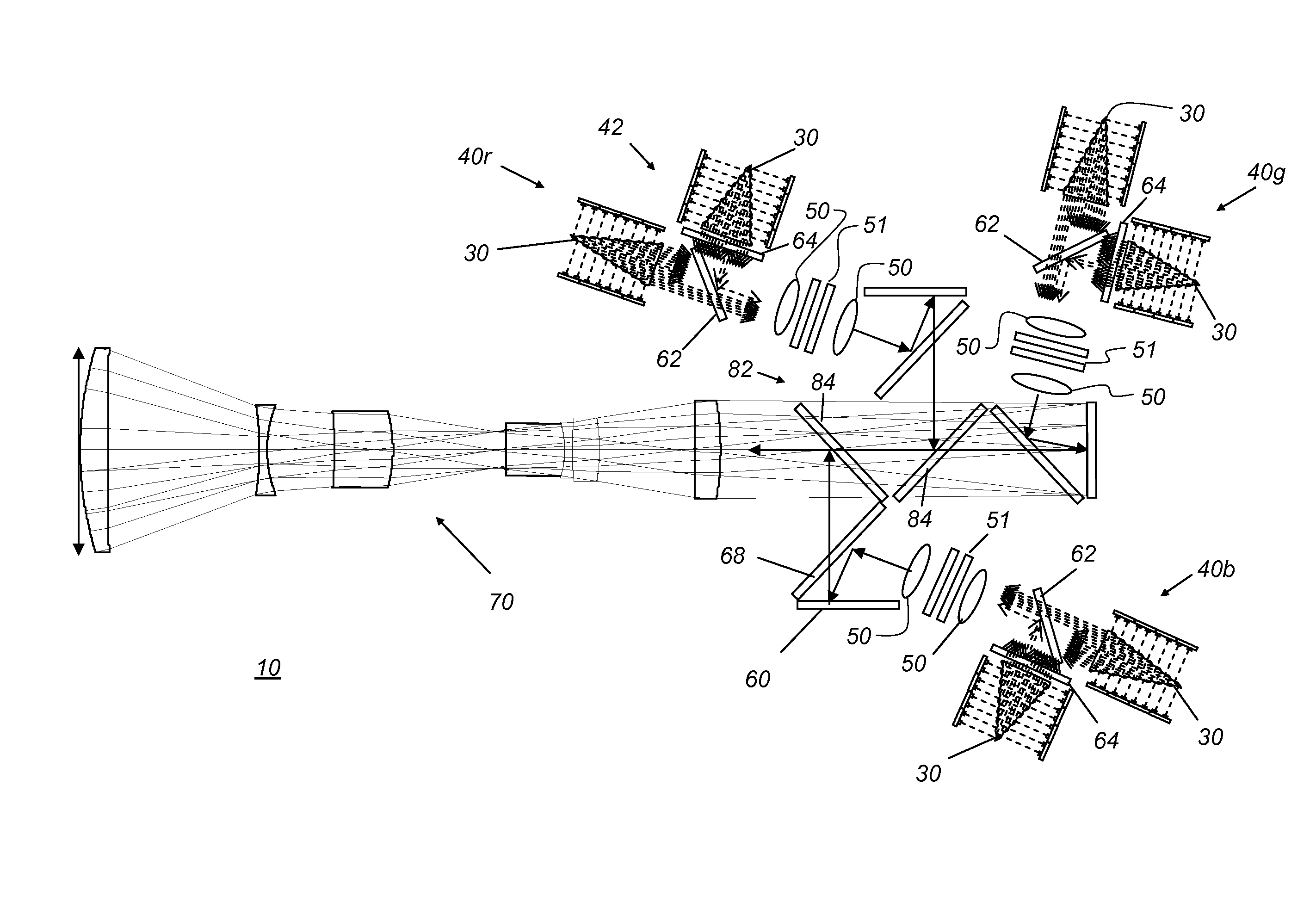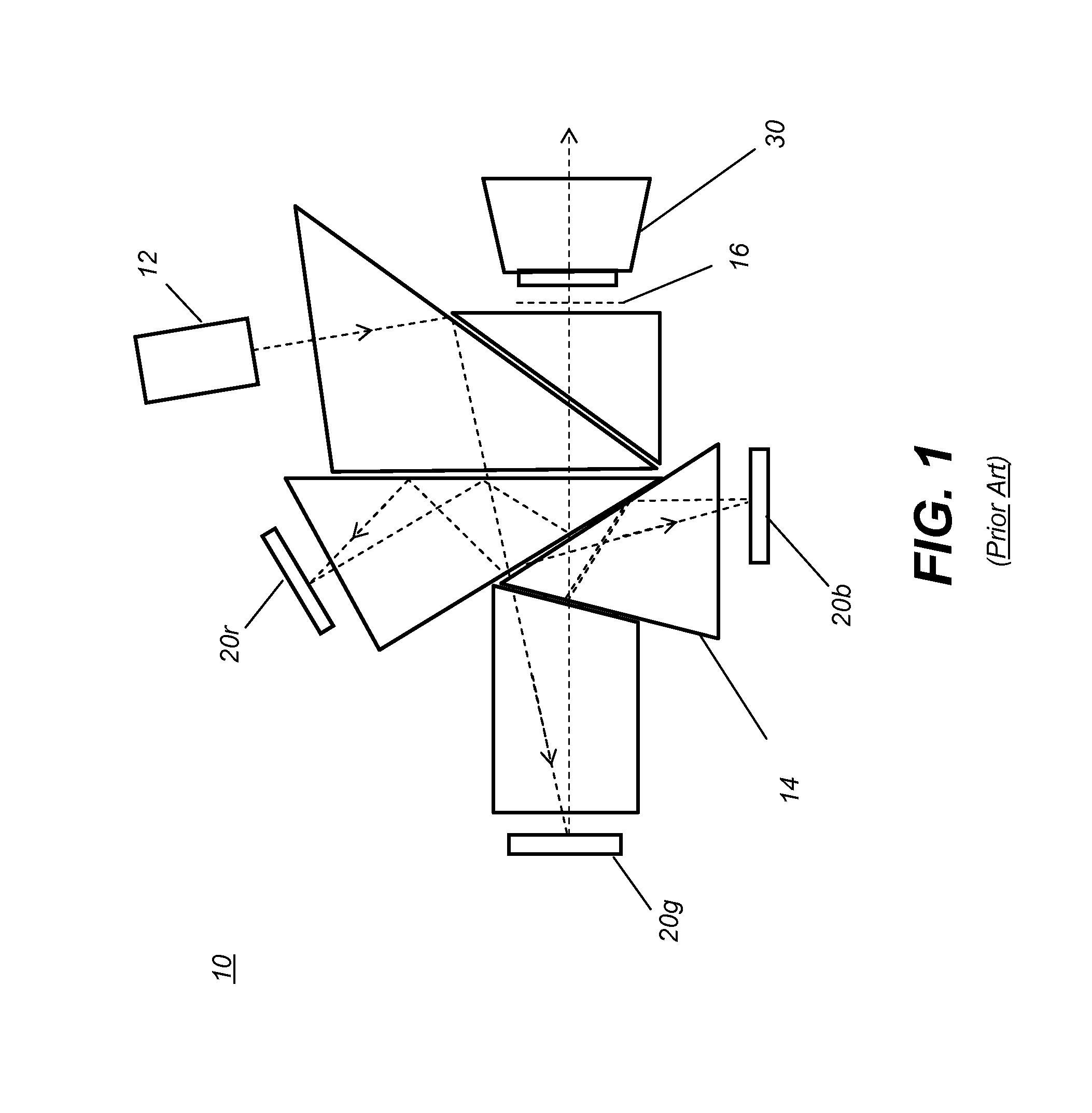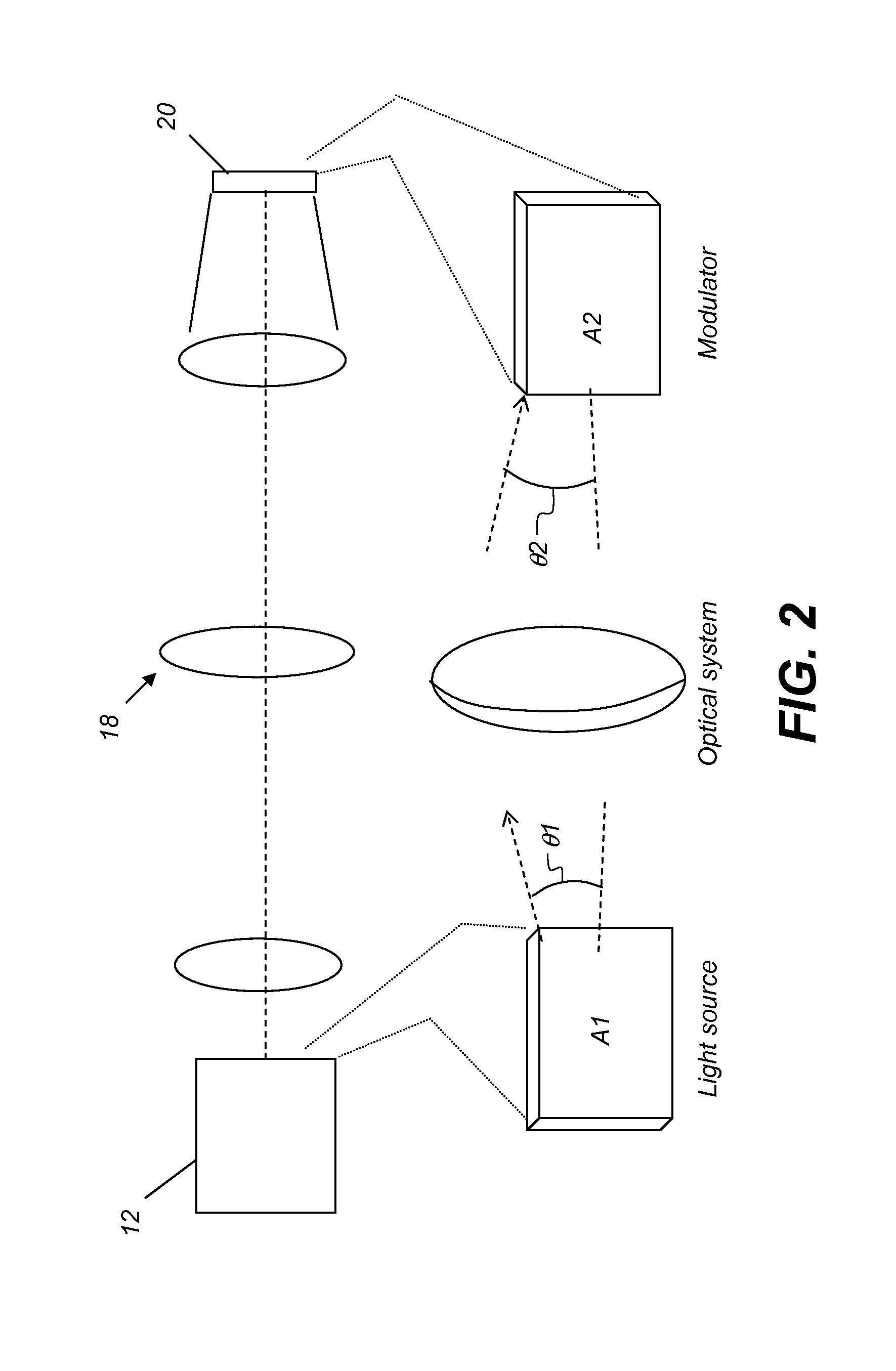Stereo projection apparatus using polarized solid state light sources
a technology of polarized solid state light source and stereoscopic digital image, which is applied in the direction of optics, instruments, optical elements, etc., can solve the problems of inability to meet the requirements of dlp design for higher-quality digital cinema projection, inability to meet the requirements of philips or other suitable combining prisms, and inability to meet the requirements of dlp design, etc., to achieve the effect of improving the matching of etendues
- Summary
- Abstract
- Description
- Claims
- Application Information
AI Technical Summary
Benefits of technology
Problems solved by technology
Method used
Image
Examples
Embodiment Construction
[0049]The present description is directed in particular to elements forming part of, or cooperating more directly with, apparatus in accordance with the invention. It is to be understood that elements not specifically shown or described may take various forms well known to those skilled in the art.
[0050]Figures shown and described herein are provided to illustrate principles of operation according to the present invention and are not drawn with intent to show actual size or scale. Because of the relative dimensions of the component parts for the laser array of the present invention, some exaggeration is necessary in order to emphasize basic structure, shape, and principles of operation.
[0051]This invention may be utilized with Micro-Electromechanical Structures (MEMS) base modulators because they do not vary the polarization of the incoming light on a individual pixel basis. MEMS devices include micro-mirror structures such as the Texas Instruments DLP, Grating Light valve devices s...
PUM
 Login to View More
Login to View More Abstract
Description
Claims
Application Information
 Login to View More
Login to View More - R&D
- Intellectual Property
- Life Sciences
- Materials
- Tech Scout
- Unparalleled Data Quality
- Higher Quality Content
- 60% Fewer Hallucinations
Browse by: Latest US Patents, China's latest patents, Technical Efficacy Thesaurus, Application Domain, Technology Topic, Popular Technical Reports.
© 2025 PatSnap. All rights reserved.Legal|Privacy policy|Modern Slavery Act Transparency Statement|Sitemap|About US| Contact US: help@patsnap.com



